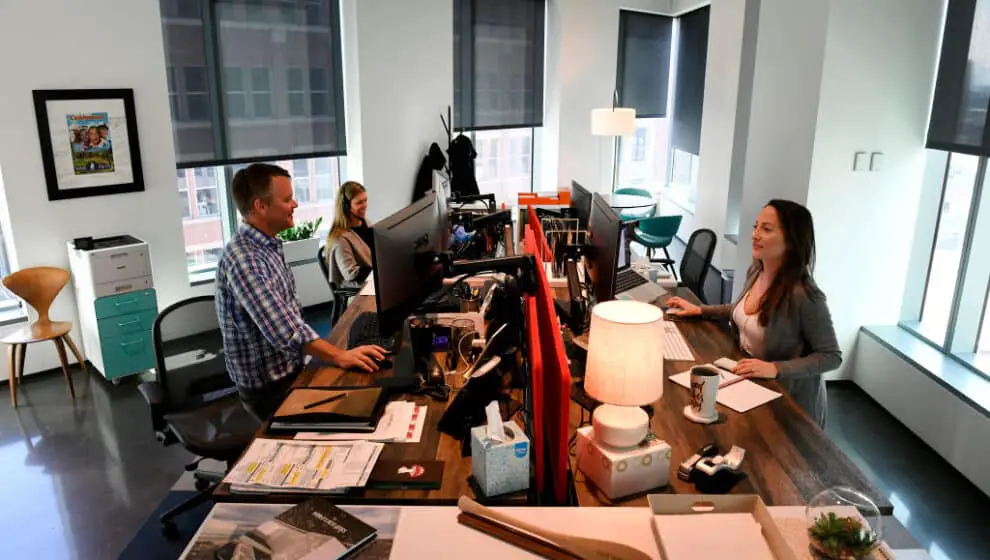While a corner office was once a status symbol, a new trend in work spaces for high-profile employees may be emerging.
Key Details
- Company leaders like Facebook’s Mark Zucherberg and then-New York City Mayor Michael Bloomberg were among the first to start a trend of open office spaces where C-level executives sat with employees.
- While the movement was somewhat trendy, changes since the pandemic have made the trend practical as office spaces get smaller. Companies are cutting back on private office space as they refocus on collaborative work areas for the days when employees do come into the office.
- Executive will still have private work space to take meetings and focus on work, but now when the executive isn’t working from the office, his space is up for grabs in some companies.
Why it’s news
As remote work becomes the norm, office spaces are continuing to change while companies find what works best with the new routine.
Office spaces now have to serve more than one purpose. A private work space for an executive who doesn’t come into the office every day is viewed as a waste of real estate. By having multipurpose offices, companies can maximize a smaller office footprint.
CEOs and other executives will still get special treatment when it comes to their workspace, but when the executive isn’t there, their office space is free game for other employees.
Office spaces are shrinking thanks to remote and hybrid work styles. Corporate architecture firm CBRE found in an April survey that over half of companies plan to reduce their office footprint, an increase from 2021 when less than half said the same.
The same survey found that 36% of respondents were planning on returning employees to the office. An overwhelming majority—80%—plan for this return to be hybridized, with clearly defined expectations and requirements for employees.
Design and architecture firm Gensler explained its process when redesigning LinkedIn’s Omaha office space. The office space is “designed as a fully dynamic work environment, with 200,000 square feet of non-assigned, team-based neighborhoods and a host of new space types meant to support entirely new ways of working.”
The firm designed several workspaces for different employee needs. Some are intended for individuals to focus on work, allowing privacy. Others are focused on collaboration, group work, and brainstorming.
When company leaders need privacy, there are conference rooms available where they can handle more private matters, but those spaces are available to all employees when needed.
As more companies accept the hybrid work style, this method of designing office space could become the norm.
